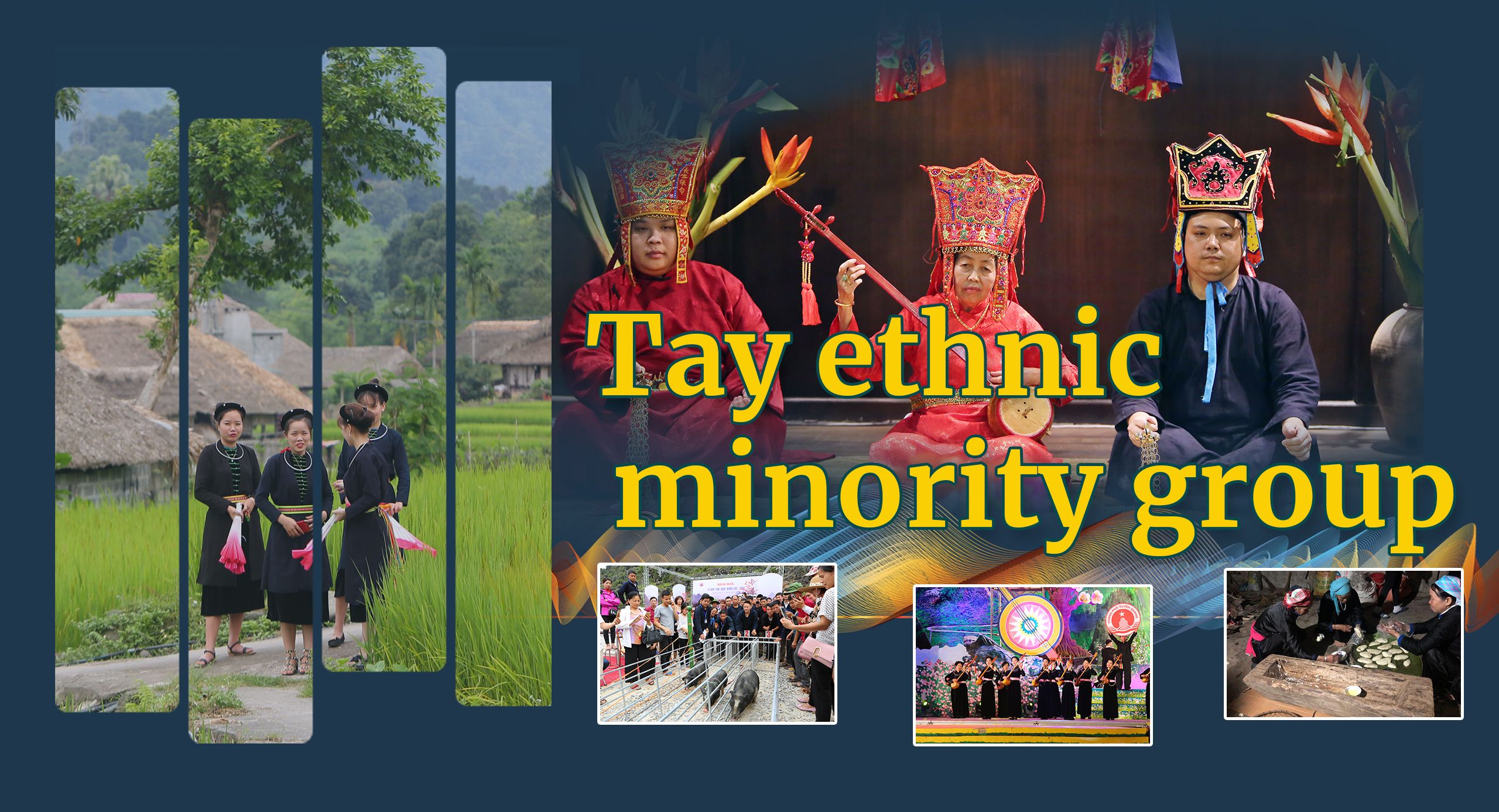
Language: The Tay language is a subfamily of the Thai-Kadai language group.
Residence: The main area in which Tay people currently reside is in the valleys of the Northeast provinces such as Quang Ninh, Bac Giang, Lang Son, Cao Bang, Bac Kan, Thai Nguyen, Ha Giang, Tuyen Quang to Lao Cai and Yen Bai.
History: The Tay people were present in Vietnam very early, from the end of the first millennium BC and were one of the first owners of ancient Vietnam.
Tay ethnic group As one of the first owners of ancient Viet, the Tay people have many long-standing traditions and unique cultural identities.
History
The Tay people were present in Vietnam very early, from the end of the first millennium BC and were one of the first owners of ancient Vietnam.
Other names: Tho.
Geographical distribution
The main area in which Tay people currently reside is in valleys of the Northeast provinces such as Quang Ninh, Bac Giang, Lang Son, Cao Bang, Bac Kan, Thai Nguyen, Ha Giang, Tuyen Quang to Lao Cai and Yen Bai.
Population
According to the census on the 53 ethnic minorities as announced on April 1, 2019, the total population of the Tay ethnic group is 1,845,492. Of whom, 918,155 are male and 927.337 people are female.
Language
The Tay language is a subfamily of the Thai-Kadai language group.
Main features
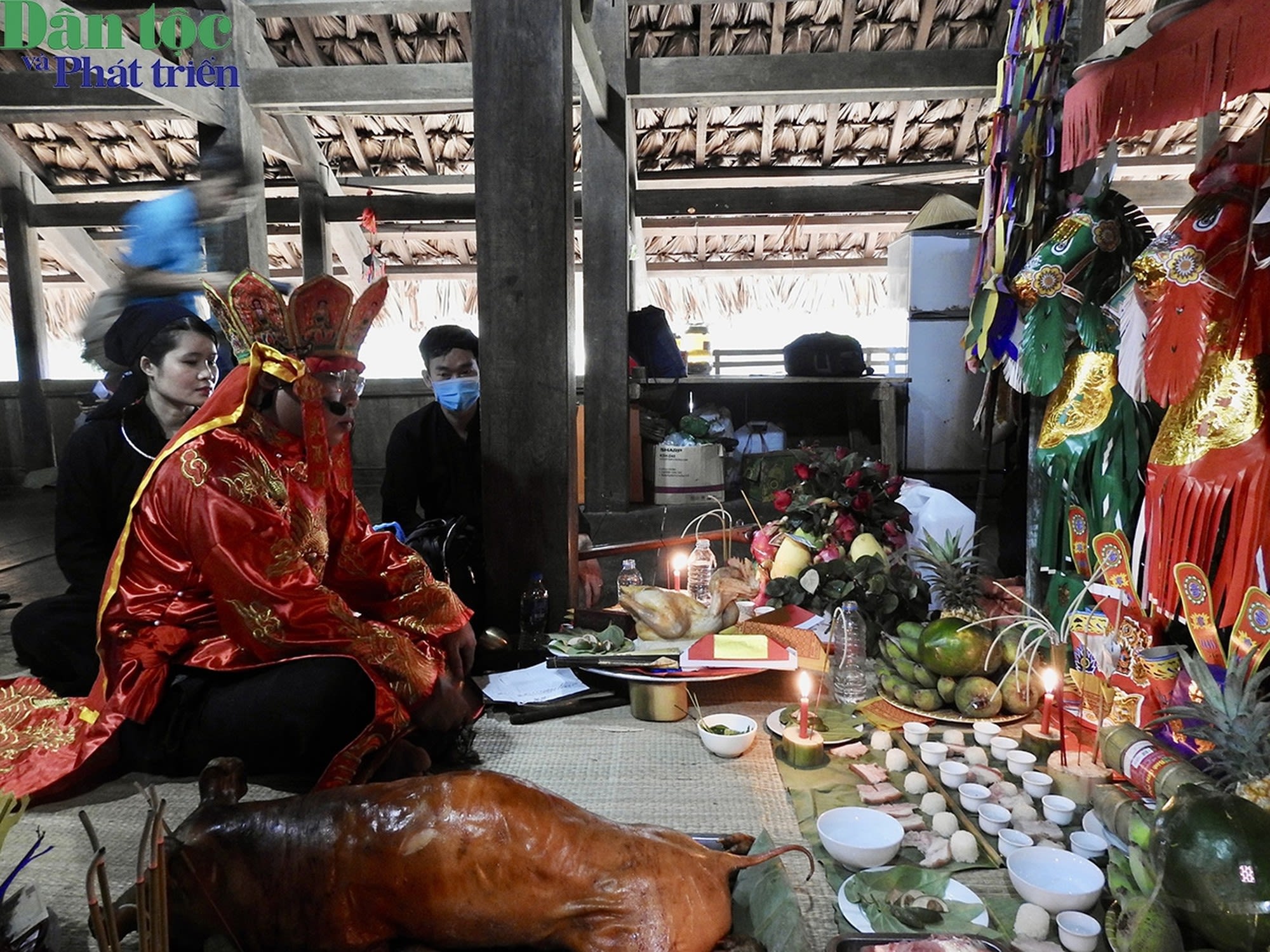
The Tay people pray for peace. (Photo: Ethnicity and Development Newspaper)
The Tay people pray for peace. (Photo: Ethnicity and Development Newspaper)
Religion and belief: The Tay people have many different forms of folk beliefs, such as ancestor worship, worship of the midwife, Quan The Am (Avalokitesvara Bodhisattva), Kitchen God, the earth god, and in some villages, worship of the God of the village. In some places, they even build pagodas to worship Buddha. The life cycle rituals also have an important meaning in the spiritual life of the Tay people.
Housing: Traditional houses of the Tay people include three basic types: houses on stilts, half-stilt houses and half-ground houses and defensive houses. In particular, the house on stilts is the most popular traditional type of house, with the general structure being a five-compartment, three-compartment or, two-wing stilt house, with a diagonal axe-shaped roof, which sits low compared to the floor. The floor is covered with bamboo or wooden planks. There are few windows, sets of 3, 5, and 7-column trusses or variations of 2, 4, and 6-columns. The roof is covered with grass, palm leaves, cork or tile.
Half-stilt, half-land house is a type of house suitable for sloping terrain, appearing only sporadically in a few places, especially in midland areas near mountains and forests. A defensive house is a form of housing with the function of preventing and fighting robbers and wild animals, only found in the border areas between Vietnam and China. In Lang Son, this type of house was later transformed into a two-story house with thick earthen walls, the second floor is made of wood, and the roof is styled with yin and yang tiles.
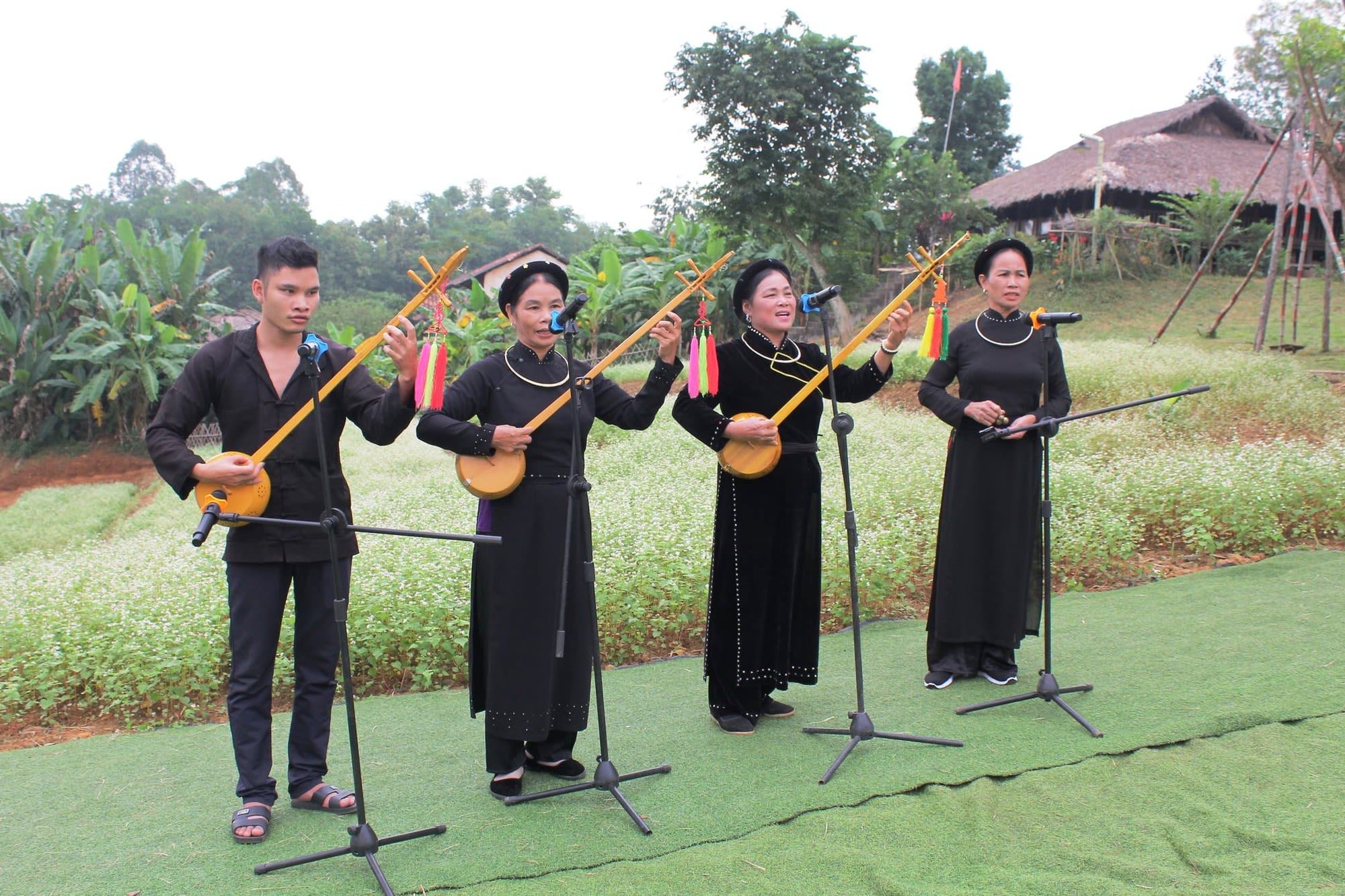
Tay people in traditional costumes. (Photo: Vietnam National Village for Ethnic Culture and Tourism)
Tay people in traditional costumes. (Photo: Vietnam National Village for Ethnic Culture and Tourism)
Clothing: Mainly made of black indigo fabric, with little decorative patterns. Men's clothing consists of a V-shaped and four-flapped long dress, with fabric buttons, small and long sleeves, with two pockets on either side of the bodice.
Women’s outfits usually have two shirts, a short blouse and a long shirt; pants or skirts, belts; turban and square scarf worn on the head. The blouse is a short, thin shirt, made of white or light-coloured fabric, worn under a long dress. The shirt has four flaps, V-shaped, small sleeves, and two small pockets at the lapel. Ao Dai is a five-body shirt with five buttons with cloth or bronze buttons on the right armpit; a long belt that wraps around the abdomen and ties it behind, letting it drop down to the ankles; a round collar; and the sleeves are long and narrow.
Cuisine: The main food that Tay people use for daily cooking is plain rice. In addition to plain rice eaten daily, the Tay people also use plain rice and glutinous rice to cook porridge, lam rice, vermicelli, nuggets, and many sticky rice dishes and cakes. In particular, ant egg cake is considered a speciality of the Tay people because its filling is made from the eggs of black ants that build a nest on a tree branch, which is stir-fried with fat, salt, palanquin or scallions.
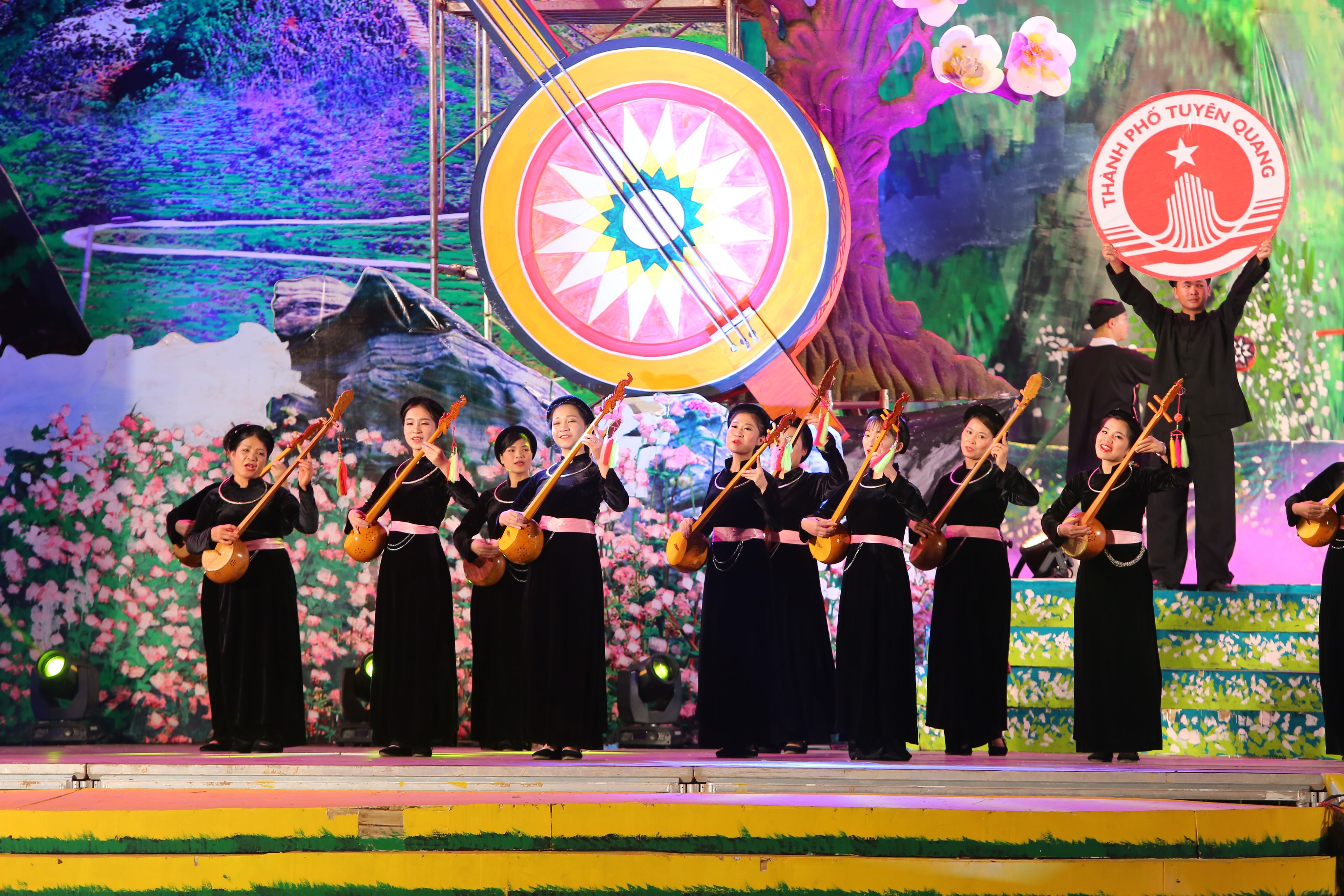
Tay people and Then singing. (Photo: Thanh Dat)
Tay people and Then singing. (Photo: Thanh Dat)
Art: The Tay people have many folk songs such as luon, then, quan lang, vi singing, lullaby, and folk songs.
Luon is a tune that is used frequently in the form of a love song between a man and a woman, sung at home and at festivals, weddings, and new home celebrations when a stranger stops to spend the night in the village.
Then is considered a special folk song, formerly used almost exclusively in rituals in the form of chanting and when singing, it can be combined with dance and music.
Quan Lang singing is only used at weddings, it is a form of reciprocal singing between the representatives of the groom's family and the girl's family.
Tinh flute is a musical instrument present in all cultural and spiritual activities of the Tay people, like the soul in Tay folk dance.
Education: According to census data on 53 ethnic minorities as of 1 April 2019, the percentage of people aged 15 and over who can read and write in general is 94.9%; the general school attendance rate of children at primary level: 100.4%; at the lower secondary level is 97.5%; at upper secondary level: 79.5%. The rate of people aged 15 years and over who can read and write their ethnic script is 20.5%. The percentage of Tay children over 5 years old who can go to school accounts for 99.63%.
Economic conditions: The Tay people have exploited the valleys and hills of their habitation into fields and fertile terraces; into forest gardens with palm, anise, and green fruit trees. The Tay people in many places now know how to diversify their crop structure, combining traditional farming techniques such as intercropping, crop rotation, the use of microbiological and chemical fertilisers; developing livestock with many types of cattle and poultry. The Tay people have many handicrafts such as knitting, weaving, dyeing indigo, making tiles, and woodworking.
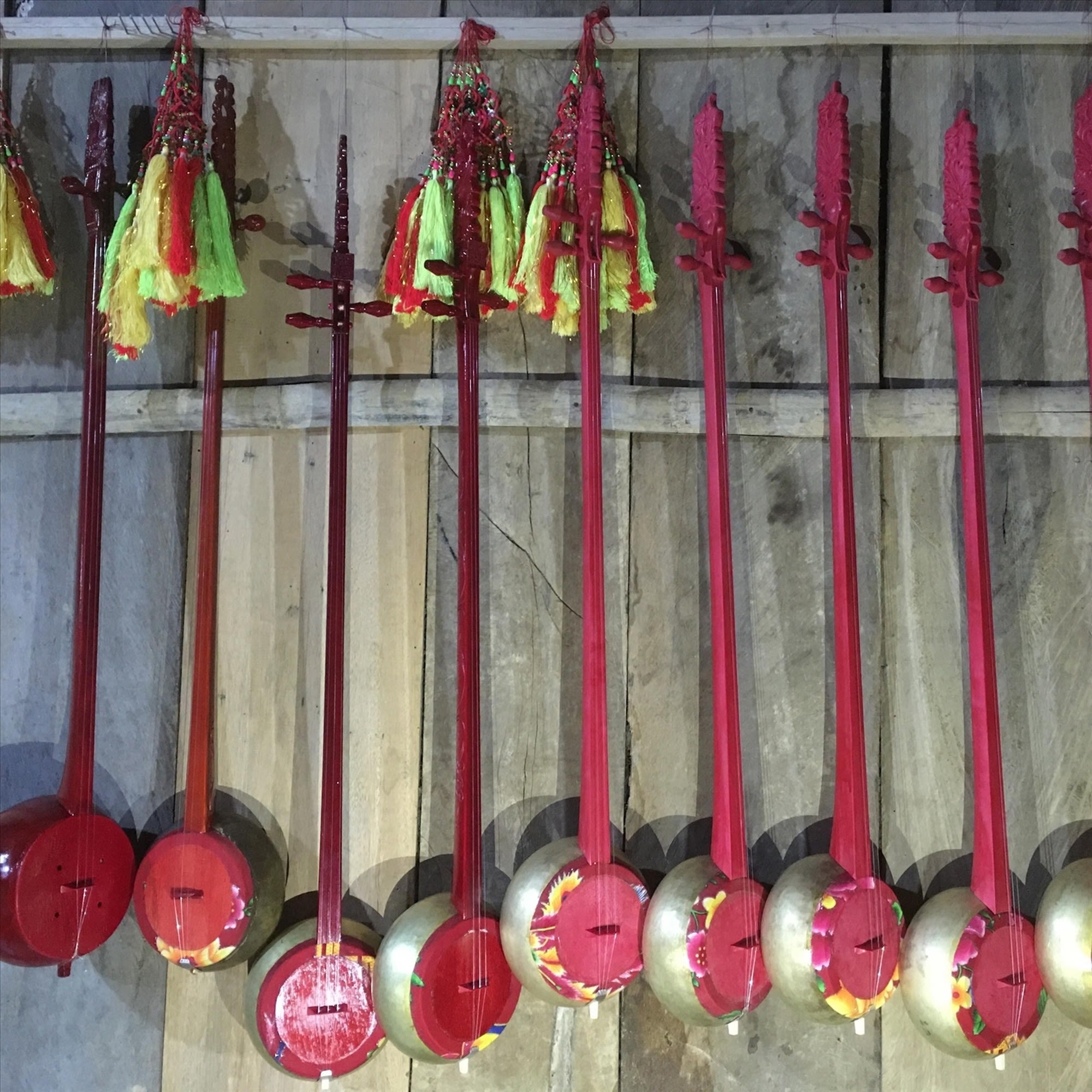
Tinh flute of the Tay. (Photo: Ethnicity and Development Newspaper)
Tinh flute of the Tay. (Photo: Ethnicity and Development Newspaper)
Thanks to a favourable geographical position, adjacent to the Northern Delta and adjacent to China, the Tay people's residence area in the Northeast region had a busy trade exchange with many famous markets, such as Ky Lua market, Dong Dang market of Lang Son province; Quang Uyen market, Trung Khanh market of Cao Bang province or Chu market and Du market of Thai Nguyen province.